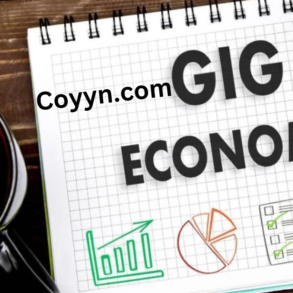In today’s fast-paced digital world, mobile commerce (m-commerce) is a crucial channel for businesses to reach customers. With smartphones becoming the primary means of internet access for millions of people globally, having a well-designed mobile app has become essential for any business that wants to thrive. If you’re considering building a mobile commerce app for your business, you are on the right path to improving customer engagement, sales, and brand presence.
In this article, we will explore why developing a mobile commerce app is vital and provide you with a comprehensive guide on how to developpez votre application m-commerce, from planning to launch.
Why M-Commerce is Important for Your Business
The rise of m-commerce is reshaping how businesses interact with their customers. According to recent statistics, over 72% of e-commerce sales are expected to come from mobile devices by 2025. This growing trend indicates that businesses without an m-commerce presence are missing out on a significant market.
Here’s why m-commerce is crucial for business success:
1. Improved User Experience
Mobile apps provide a more seamless and faster user experience compared to websites. The app is always accessible, and with features like push notifications, in-app purchasing, and saved preferences, the user journey becomes smoother. This results in higher conversion rates and customer retention.
2. Increased Sales and Revenue
A mobile commerce app offers your customers a convenient way to shop from anywhere at any time. The ease of access directly translates into more sales opportunities. Moreover, features like one-click purchasing, personalized product recommendations, and integrated payment systems simplify the purchasing process and encourage impulse buying.
3. Brand Loyalty and Engagement
Mobile apps are excellent tools for building brand loyalty. With an m-commerce app, you can engage your customers through personalized offers, exclusive deals, and loyalty programs. The app also becomes a constant reminder of your brand, as customers have direct access to your store right from their mobile devices.
4. Advanced Analytics
Mobile apps allow businesses to gather valuable customer data such as shopping habits, preferences, and behaviors. This data can be used to create personalized marketing strategies, improving customer satisfaction and increasing your chances of long-term success.
How to Developpez Votre Application M-Commerce
Now that you understand the importance of having an m-commerce app, let’s dive into how to build one. developpez votre application m-commerce involves multiple steps, from planning and designing to testing and launching. Here is a step-by-step guide to help you through the process:
Step 1: Define Your Goals and Target Audience
Before you start the development process, it’s essential to clearly define the goals of your mobile commerce app. Ask yourself questions such as:
- What do I want to achieve with this app? (e.g., increase sales, boost customer loyalty, expand market reach)
- Who is my target audience? (e.g., age, gender, location, shopping preferences)
- What are the key features I need to include to enhance the user experience?
Having clear goals will help you shape the app’s functionality and design in a way that aligns with your business objectives and customer needs.
Step 2: Research Competitors and Market Trends
Once you have set your goals, conduct thorough research on your competitors and the current trends in the m-commerce market. Understanding what similar businesses are offering will give you insights into what works and what doesn’t. Look at the features of popular m-commerce apps, user reviews, and industry reports. This research will help you identify gaps in the market and opportunities to differentiate your app from others.
Step 3: Choose the Right Platform (iOS, Android, or Both)
Choosing the right platform for your app is one of the most critical decisions you’ll make during the development process. If most of your customers use Android, then building an Android app might be the right choice. However, if your audience is more inclined towards Apple products, you may want to focus on iOS. In many cases, businesses opt to build both iOS and Android apps to reach a broader audience.
To make the decision easier, look at analytics from your website or other digital properties to determine which devices your customers are using most frequently.
Step 4: Decide on Key Features
The success of your m-commerce app will heavily depend on its features. Some of the key features to include are:
- User Registration/Login: Allow users to sign up easily using their email, social media accounts, or phone numbers.
- Product Search and Filters: Enable customers to search for products using various filters such as categories, price ranges, and brands.
- Cart and Checkout: Make the shopping experience seamless by offering an intuitive cart system and a smooth checkout process.
- Payment Gateway Integration: Include multiple payment methods such as credit cards, digital wallets, and mobile payment options.
- Push Notifications: Keep your customers engaged with timely notifications about discounts, sales, and new arrivals.
- Order Tracking: Provide real-time updates on order status to keep customers informed.
- User Reviews and Ratings: Encourage customers to leave feedback, which can help build trust among new users.
Step 5: Design a User-Friendly Interface (UI/UX)
Design plays a crucial role in user experience. A clean, intuitive, and visually appealing design will make your app more enjoyable to use. Focus on creating a simple navigation system, clear product images, and easily accessible buttons for key actions like adding products to the cart or completing a purchase.
Hire experienced UI/UX designers or work with a design agency that specializes in e-commerce apps. Test various design elements with potential users to ensure they resonate with your target audience.
Step 6: Choose the Right Technology Stack
The technology stack you choose will determine the performance and scalability of your m-commerce app. Some common technologies used for mobile app development include:
- Frontend Development: HTML5, CSS, JavaScript (for hybrid apps) or Swift (iOS), Java/Kotlin (Android)
- Backend Development: Node.js, Ruby on Rails, or Laravel for handling server-side processes.
- Database: MySQL, Firebase, or MongoDB for storing user data, product details, and orders.
- Cloud Services: AWS, Google Cloud, or Azure for hosting the app and ensuring it can scale as needed.
Work with an experienced developer or development team to choose the right technology stack that aligns with your business needs and budget.
Step 7: Develop and Test
Once you have your design and technology stack ready, it’s time to start the development process. This phase involves coding the app’s front end, back end, and integrating all necessary features. During development, it’s crucial to follow an agile methodology, which allows for continuous testing and iteration.
Conduct thorough testing to ensure your app works seamlessly across all devices and operating systems. Test for potential bugs, performance issues, and security vulnerabilities.
Step 8: Launch Your App
After development and testing are complete, it’s time to launch your app. Submit it to app stores (Google Play and Apple App Store) and ensure it meets their respective guidelines. Prepare a marketing strategy to create awareness about your app’s launch. Leverage social media, email marketing, influencer collaborations, and paid advertising to attract users.
Step 9: Monitor and Improve
Post-launch, your work doesn’t end. Continuously monitor user feedback, app performance, and sales metrics. Update the app regularly with new features and fixes to ensure it stays competitive and relevant in the fast-evolving m-commerce space.
Conclusion
Building an m-commerce app can be a game-changer for your business, allowing you to tap into the growing market of mobile users and boost sales and engagement. By following the steps outlined in this guide, you can successfully developpez votre application m-commerce and position your business for long-term success in the digital age. Remember that a well-designed, user-friendly, and feature-rich app can significantly impact your business’s bottom line, providing your customers with the convenience and experience they desire.








